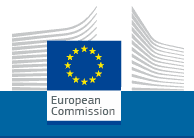
After more than 40 years of operation, DTVE is closing its doors and our website will no longer be updated daily. Thank you for all of your support.
EC sets out stall on digital single market
 The EC has set out a 16-point plan to enable the creation of a digital single market, highlighting the need for new rules to enable access to digital goods across borders, a level playing field for digital networks and measures to maximise the growth potential of the digital economy.
The EC has set out a 16-point plan to enable the creation of a digital single market, highlighting the need for new rules to enable access to digital goods across borders, a level playing field for digital networks and measures to maximise the growth potential of the digital economy.
Highlights with potential relevance for the audiovisual industry include a proposal “to end unjustified geoblocking” which the Commission describes as “a discriminatory practice used for commercial reasons, when online sellers either deny consumers access to a website based on their location, or re-route them to a local store with different prices”. The EC has also issued a call for legislative proposals before the end of the year to reduce the differences between national copyright regimes and allow for wider online access to works across the EU, and announced a review of the satellite and cable directive to assess if its scope needs to be enlarged to broadcasters’ online transmissions and to explore how to boost cross-border access to broadcasters’ services in Europe.
With regard to networks, the EC wants to see an overhaul of telecom rules with more effective spectrum coordination, and common EU-wide criteria for spectrum assignment at national level as well as incentives for investment in high-speed broadband.
It also plans to review the audiovisual media framework, focusing on the roles of the different market players in the promotion of European works and the enabling of new business models for distribution.
The EBU broadly welcomed the proposals, but urged the Commission “to build on the important recommendations by Pascal Lamy following the High Level Group on Spectrum” which “clearly linked spectrum allocation for digital terrestrial television with the value generated by employment in the creative and cultural sectors, media pluralism and diversity and the reality of how content is accessed”.


